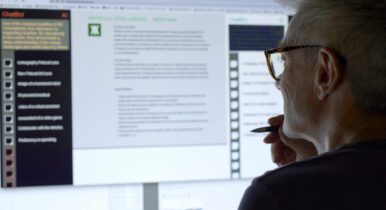Rethinking the Political Approach to Design by Adding a Human Element
Civilla, a non-profit design studio based in downtown Detroit, recently partnered with New York-based shop Hyperakt to design and build a website that includes case studies and an open-sourced curriculum on human-centered design.

Image Credit: IAM-photography
The practitioners who run firms and groups or manage campaigns may not think of themselves as the stewards of public institutions. But when it comes to design, they make similar mistakes as leaders in the public sector: Instead of thinking of the end user of, say, the campaign’s website other internal organizational considerations come into play that distort the final product’s effectiveness.
Michael Brennan, co-founder and CEO of Civilla, a non-profit design studio based in downtown Detroit, has made it his mission to put users back at the center of public design. It’s something he saw lacking during his more than three decades in the non-profit sector.
“I had come to see that many things that are designed to help are more often designed around the institution, around the policy, around the money, around the technology and it gets very far from the end user,” he told C&E.
One project that Civilla got recognition for was the redesign of Michigan’s application for food assistance and Medicaid, which was 42 pages long, 18 thousands words and a 1,000 questions before Civilla’s redesign made it 80 percent shorter. To do that, Brennan’s team spent time with residents who had navigated the system and frontline workers who processed the applications. The new application, which was rolled out in January 2018, was recognized by the Harvard Kennedy School “as one of the Top Innovations in American Government.”
“We change the way public-serving institutions work through applying human-centered design to the problems that they’re facing and tackling,” said Brennan. “What we try to work very hard on is to step into the shoes of the person that has to navigate this so that we can better understand the problem and hence we can work with them to imagine not just how you improve it but, through the eyes of the end user, work to understand how it ought to be, which is a different question.”
So what leads institutions to make bad design decisions? “I think there’s a lot of pressure to deliver certainty and to be sure about what the problem is and what the solution is,” said Brennan.
“I don’t think there’s much room for leaders to say, ‘I actually don’t know and we need.’ And to take the time to understand this in a deep meaningful way so that we can design solutions that are much more enduring, cost effective and gets friction out of the system and puts humanity into it.”
He added: “Leaders have been trained over the past 100 years through an industrial model on how to solve problems and that is deeply ingrained inside of organizations … so we tend to reach for the same tools over and over, often getting sub-optimal results.”
Civilla recently partnered with New York-based shop Hyperakt to design and build a website that includes case studies and an open-sourced curriculum on human-centered design.
“It takes courageous leaders and a willingness to go and invest the time, energy and the resources to listen, not just through a quick focus group or a quick survey, but really deep listening over a good period of time,” Brennan said of his group’s approach. “One of the toughest things to do is to unlearn and be open to a new way.”



